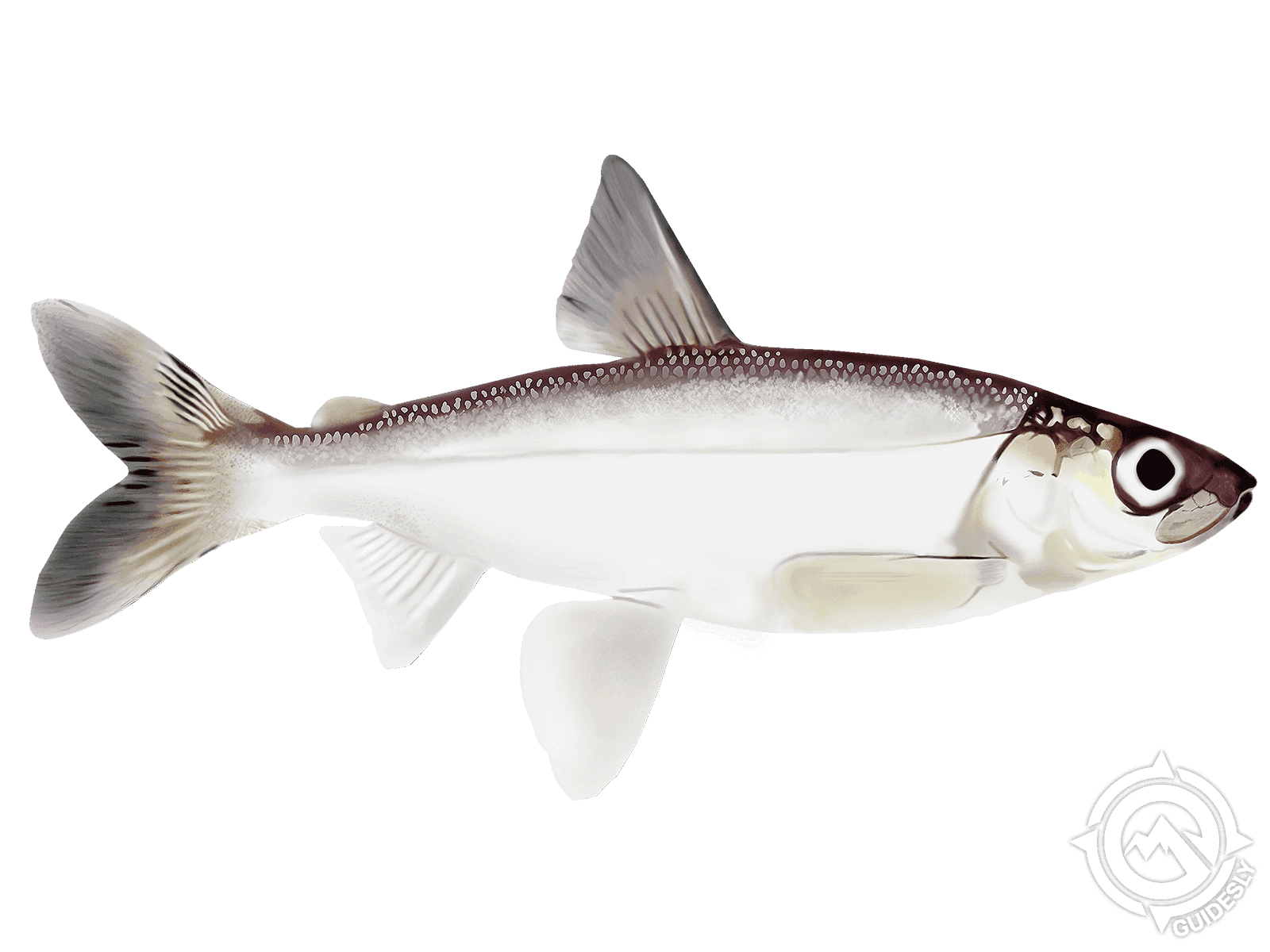Cisco

Species Details
Coregonus Artedi
Salmonidae
Salmoniformes
onshore, nearshore, lakes
1 - 4 lbs.
10" - 16"
What Do I Need to Know About Cisco to Catch Them?
Cisco, or Lake Herring, are cold-water fish found in deep lakes. They school near the surface at dawn and dusk. Use small jigs or spoons, experiment with depths, and be attentive to subtle strikes.
Cisco (Coregonus Artedii) Description
The Cisco (Coregonus Artedii) has a long slender body and a forked tail. The top part of its body is grayish, its belly is white, and the middle part is silver. It also has a distinctive gray horizontal line that runs from the base of the head right to the caudal fin. All its fins are translucent. Though it may kind of look like a lake whitefish, you can tell them apart with the Cisco’s pointed snout and its protruding lower jaw.
Spawning and Diet
Cisco are carnivores, feeding mostly on planktons; but they are also known to eat minnows, crustaceans, and mayflies.
They are schooling fish, mostly gathering in large groups, especially during spawning season in the late fall. At that time they move to the shallow water (typically within three to ten feet deep) and lay their eggs (approximately around 30,000 eggs) on the rocky bottom. The eggs would be then left behind on their own. Those that wouldn’t fall victim to other predators would hatch in about four months. They would reach sexual maturity in four years and would live up to eight years. Known predators include lake trout, rainbow trout, northern pike, yellow perch, and walleye.
Interesting Facts About Cisco Fish
- The biggest Cisco recorded measures at twenty-two inches and weighs approximately five pounds.
- They are often mistaken for Lake Whitefish.
- Their populations dwindled a bit due to overfishing as well as the proliferation of the Rainbow Trout, an invasive species that feed on them. However, the combination of fishing regulations, as well as the collapse of Rainbow Trout populations, helps the Cisco population make a comeback.
- Cisco are often targeted by anglers for their delicious meat.
Size and Swimming Speed
The average size of the Cisco fish usually is just around 10 - 15 inches and may weigh about 1 - 2 pounds. Because of their diminutive size, they are not known to swim that fast but they are agile, especially when spooked.
Habitat and Distribution
The Cisco fish are found throughout Canada and in the US. They are found in the waters of the Great Lakes and the water systems that stem from these lakes. They can also be found east in the Finger Lakes in New York, and down south in the Mississippi River.
The Cisco prefer to dwell in lakes where the water is cold. They are pelagic, which means that they tend to stay in mid-water, usually in large congregations or schools. Though they are usually found at depths just several hundred feet from the surface or even closer to the surface during winters, they may go deeper during summers or when the water surface gets warm.
Fishing Techniques - How to Catch Cisco
When looking to catch this fish in warm weather, you would use sinkers as they tend to go deeper during warm seasons. The best season for Cisco fishing though is winter when the fish schools are large near the surface. For ice fishing, you don’t need to have specialized gear. You just need an auger and an ice scoop to go with your regular lightweight gear with a spinning reel and a small hook and you’re ready to go. For bait, spoons and small jigs would be enough to catch this fish.







